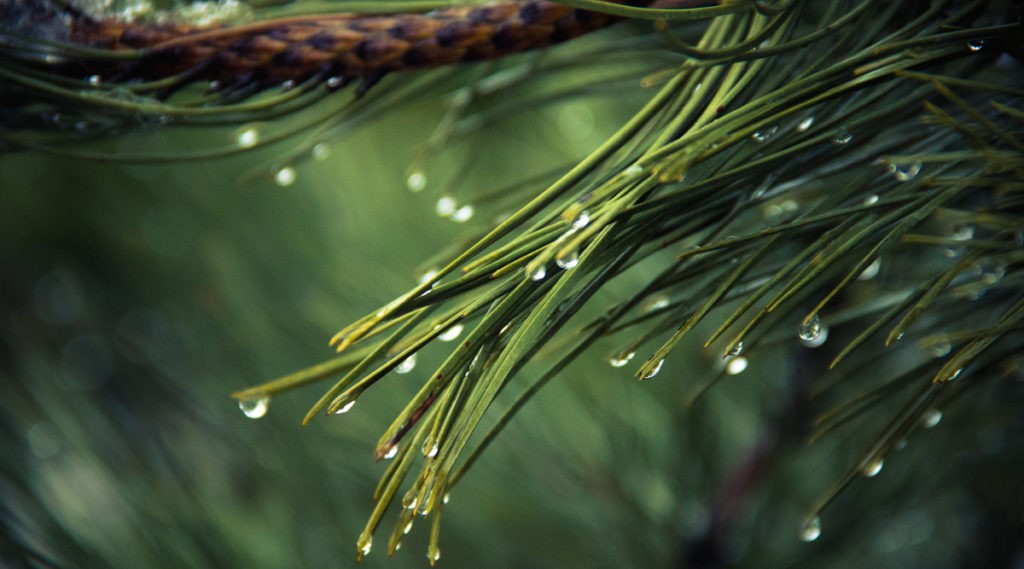
There’s an ancient tradition that many of us still practice during the holidays.
Millions of adults and children alike here in the States and around the world get into the holiday spirit by hauling a bushy evergreen tree into the living room, standing it up in a prominent location and decorating it with lights, miniature figurines, and spiritual symbols.
What we don’t often realize is that pine, spruce and fir trees are powerful native medicines that hold many gifts for our mind, body, and spirit.
I was stringing up lights around our Christmas tree (a potted pine) yesterday when it dawned on me. Whoa, we’re actually honoring sacred tree medicine right in the middle of our house.
Our ancestors relied on the pine tree for its medicine and sustenance – and many tribes still depend on it today. The remarkable healing properties of these resilient trees make them a staple to indigenous cultures from the Siberian steppes to the forests of North America and beyond.
These evergreen conifers hold much spiritual significance as well and can symbolize many things including longevity, peace, wisdom, and harmony with nature. The Iroquois burned pine to dispel nightmares and placate spirits. Other tribes burn the wood of pine as incense, while still others use pine gum for protection against negative energies.
How you can use pine medicine:
There are approximately 115 different species of pine worldwide—36 of which grow in North America. These evergreen and resinous coniferous trees (in the family Pinus, and the genus Pinaceae) are native to most of the Northern Hemisphere. But some pine species have flourished in the Southern Hemisphere too – take the cypress or kauri pines in Australia, for example. Find out which types of pine grow near you, and make sure they’re true pines. Provided that you’re not allergic, consider connecting with its healing properties. We’ve listed a few suggestions below.
1. Use the pitch. The sticky delicious-smelling sap has powerful antibacterial and antimicrobial properties. My O’odham friend Dennis often uses this as quick wilderness first aid for cuts, slivers, and burns. Try your hand at making your own healing salve below:
Pine Resin Healing Salve
Ingredients:
- ¼ cup pine resin
- ½ cup almond or olive oil
- 1 oz. grated beeswax
Directions:
- Heat oil in a double-boiler. As oil begins to simmer, add pine resin, and continue heating until the resin melts. Stir occasionally.
- Option: Strain mixture through a cheesecloth.
- Return mixture to double-boiler over low heat, and slowly stir in beeswax until melted. Pour mixture into jars or tins, and store in cool place.
You can use this salve on aching joints and sore muscles, shallow scrapes, and wounds, or on the chest for an aromatherapeutic agent.
2. Use the bark. In a survival situation, you can actually eat the bark of a pine tree. But the easiest way to reap its benefits is using pine bark extract, packed with powerful antioxidants, including vitamin C. The extract has been shown to lower glucose levels, improve diabetes symptoms, prevent hearing loss, restore balance, stave off infections, protect the skin from harmful UV rays, restore circulation, improve erectile dysfunction, reduce inflammation, even increase athletic performance—and the list goes on.
3. Use the needles. Also loaded with vitamin C—more than five times that of an orange—along with vitamins A, E, and a host of B vitamins, the needles are a cherished part of the pine. Pine needles have strong antimutagenic, antioxidant, and antiproliferative properties, which help in preventing the growth of cancer cells. Try making your own tea with the following recipe:
Sacred Pine Needle Tea
Ingredients:
- ½ cup young pine needles (a small handful)
- 3 cup spring water
- 1 slice of lemon (optional)
Instructions:
- Bring water to a boil.
- De-stem and remove the brown papery sheaths at the base of the needles.
- Chop needles into ½-inch pieces, to help release essence.
- Place 1 tbsp. of chopped needles into a mug and pour boiling water over top, allowing to steep for 5-10 minutes.
- Squeeze lemon into tea for flavor, or use as garnish.
4. Use the nuts. The “fruit” of these sacred trees can be found in the scales or spines of the pinecone, and is known for its own set of health benefits. These include: appetite suppression, boosting energy, reducing risk of heart disease, anti-aging, and improving vision. Use in salads and other recipes, or simply enjoy as a snack.
5. Use the oil. Invigorating and cleansing, pine essential oil can alleviate headaches, relieve pain, boost energy and mood, treat acne and other skin conditions, act as a decongestant, and freshen a room. Consider diffusing the oil at home, or adding a few drops to a bath for a rejuvenating and restorative experience.
The Christmas tree is a prime example of a wild medicine that is hidden in plain sight. Revered by those who came before us, this noble plant is a shining reminder that the forest holds many healing secrets that are waiting to be told… to those of us who are open to hearing them.
Stay curious,
Nick Polizzi
Host of Proven: Healing Breakthroughs Backed By Science
& Founder of The Sacred Science
The post The Healing Power of Pine Medicine (DIY Recipes!) appeared first on The Sacred Science.

No comments:
Post a Comment